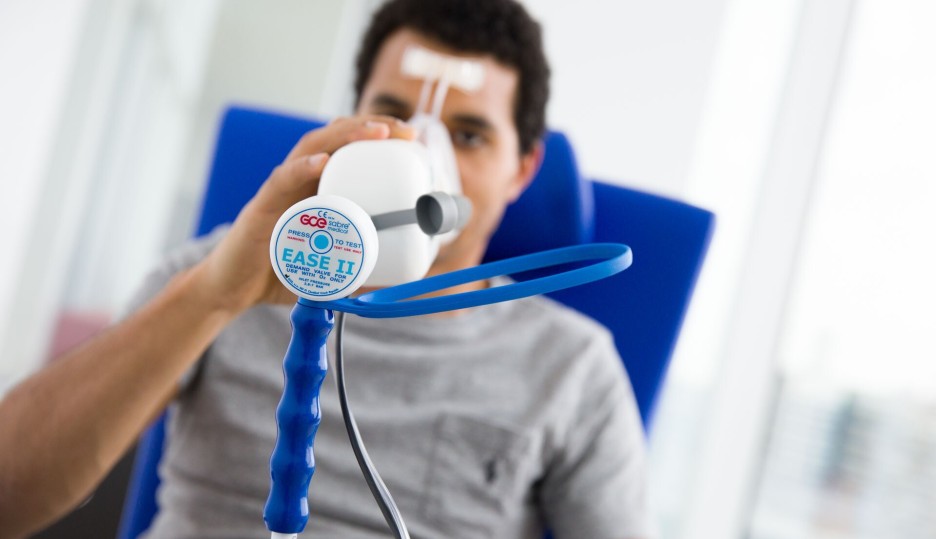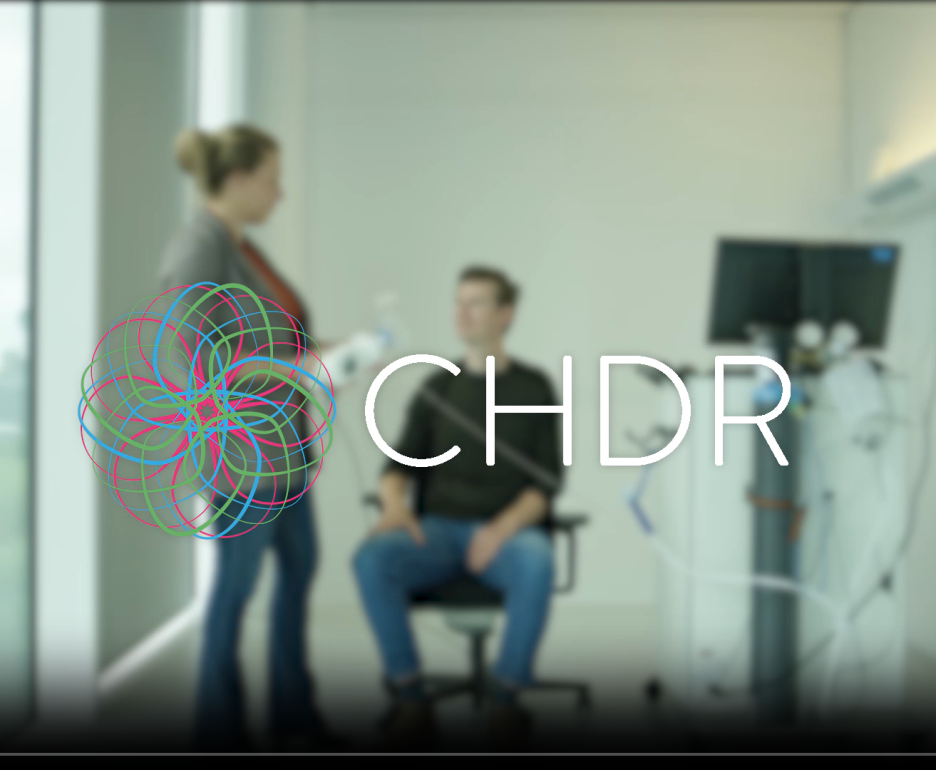A pharmacological challenge involves artificially disrupting a system that is functioning optimally in healthy subjects. When a volunteer undergoes such a challenge, the system under investigation is intentionally impaired. If a drug can restore the challenged function in a dose-dependent manner, it suggests that the drug is activating the intended pharmacological mechanism.
These challenges allow us to explore pharmacological effects in healthy subjects. At CHDR, we offer a variety of pharmacological challenges, particularly in the fields of neurology and psychiatry, to provide valuable insights into drug efficacy and mechanisms of action.
The CO2 challenge
The CO2 inhalation challenge model is a valuable tool for assessing the anxiolytic and panicolytic effects of new test compounds. CO2 inhalation can induce panic attacks in both healthy volunteers and patients with certain mood or anxiety disorders. To develop this challenge model, CHDR acquired and calibrated a CO2 tolerance tester that delivers a controlled gas mixture of 35% carbon dioxide and 65% oxygen through a secure inhalation system. This system also measures a wide range of physiological parameters, such as blood pressure, heart rate, and breathing frequency, over time. By capturing these data, we can gain objective insights into a subject’s sensitivity to panic, providing quantitative information on panic disorders and the potential efficacy of test compounds.
The scopolamine challenge
The scopolamine challenge is a reliable and reproducible method for inducing CNS impairment via anticholinergic mechanisms. Scopolamine, a muscarinic receptor antagonist, induces anticholinergic effects, which are useful for evaluating the pharmacological activity of test compounds. In our studies, scopolamine revealed CNS effects of glycine reuptake inhibitors. While these effects were modest due to limited brain penetration, their presence—absent with the inhibitors alone—underscores the model's sensitivity in detecting pharmacological activity. Furthermore, literature reports stronger suppression of scopolamine effects with muscarinic and nicotinic agonists.
The mecamylamine challenge
CHDR has also developed an anticholinergic pharmacological challenge using the nicotinic antagonist mecamylamine. In our validation study, mecamylamine demonstrated excellent tolerability and linear pharmacokinetics across the tested dose range. It induced a reproducible pattern of cognitive disturbances, specifically linked to the nicotinic acetylcholine (ACh) receptor. Results of this study suggest that the mecamylamine challenge model can be used for proof-of-pharmacology studies with nicotinic ACh receptor agonists in healthy subjects. This model provides a valuable tool in the development of cognition-enhancing compounds, such as those currently being investigated for the treatment of Alzheimer's disease and schizophrenia.
The THC challenge
CHDR has developed a robust pharmacokinetic/pharmacodynamic (PK/PD) model for THC, the primary psychoactive constituent of cannabis. THC induces psychomimetic symptoms that closely resemble core aspects of acute clinical psychosis. In clinical research, psychotic symptoms are commonly quantified using the Positive and Negative Syndrome Scale (PANSS), a clinically validated tool for the longitudinal measurement of changes in psychotic symptoms, based on a structured clinical interview. The PANSS is subdivided into three subscales: positive, negative, and general. Using this instrument, CHDR has developed a repeatable, reproducible, dose-dependent, and clinically-relevant structured interview to assess psychotic effects. Our data show that the positive PANSS subscale demonstrates highly significant, dose-dependent psychotic effects of THC in the majority of healthy volunteers. This model offers a valuable approach to assess the effects of compounds with potential antipsychotic properties or for proof-of-pharmacology studies in the field of psychosis and related conditions.
The ketamine challenge
A ketamine challenge has proven to be a robust method for inducing psychomimetic symptoms in healthy volunteers. Ketamine, an NMDA receptor antagonist, produces dissociative and hallucinatory effects that mimic aspects of psychosis, making it an effective tool for investigating the pharmacology of antipsychotic compounds. The psychotropic effects of ketamine can be measured using various assessments, including prepulse inhibition (PPI) of the startle reflex and a comprehensive CNS effects test battery, NeuroCart®, which incorporates several Visual Analogue Scales (VAS). The response to the ketamine challenge is typically more pronounced than the response to THC, and it has been shown to produce psychotomimetic effects in all subjects tested, with no 'non-responders.' This challenge model offers a reliable and reproducible method for evaluating drug effects on psychotic symptoms.
The biperiden challenge
The biperiden challenge model has proven to be a valuable tool for assessing the cognition-enhancing effects of selective M muscarinic acetylcholine receptor (mAChR) agonists. In this model, biperiden, an M mAChR antagonist, induces a dose- and concentration-dependent impairment in cognitive functions, including sustained attention, verbal memory, and working memory. The model demonstrates how M mAChR antagonism can temporarily impair cognitive function, providing a useful framework for evaluating the pharmacological effects of new cholinergic compounds aimed at enhancing cognition in conditions such as neurodegenerative and neuropsychiatric disorders.


